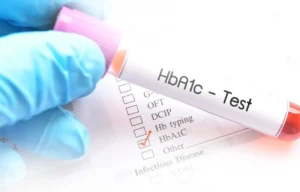Diabetic foot swelling, additionally known as edema, is a common difficulty for individuals with diabetes and requires special interest and proactive control to prevent complications.
Here’s what you want to know about its reasons, management strategies, when to look for scientific recommendations, and how Collaborative Care of Diabetes (CCD) can help.
 Several factors contribute to diabetic foot swelling:
Several factors contribute to diabetic foot swelling:
 Effective management strategies include:
Effective management strategies include:
 Collaborative Care of Diabetes (CCD) offers specialized services to manage diabetic foot swelling:
Collaborative Care of Diabetes (CCD) offers specialized services to manage diabetic foot swelling:
Causes of Diabetic Foot Swelling
 Several factors contribute to diabetic foot swelling:
Several factors contribute to diabetic foot swelling:
- Poor Circulation: Diabetes can cause blood vessel damage, which lowers blood flow and causes the feet and ankles to retain fluid.
- Kidney Damage (Nephropathy): Raising blood sugar levels can damage the kidneys, leading to lower limb edema and fluid retention.
- Heart Conditions: Diabetes makes heart disease more likely, and heart disease can worsen fluid accumulation in the feet and legs.
Tips for Managing Diabetic Foot Swelling
 Effective management strategies include:
Effective management strategies include:
Blood Sugar Control
Controlling blood sugar levels is crucial for treating diabetic foot edoema. Elevated blood sugar levels can harm nerves and blood vessels, which can result in impaired circulation and fluid retention. Effective blood sugar management involves a combination of medication, diet, and exercise:- Medication: As directed by your doctor, take insulin or oral diabetes drugs. Using these drugs as prescribed helps maintain blood sugar levels within the desired range.
- Diet: Consume a diet high in whole grains, lean meats, healthy fats, and an abundance of fruits and vegetables to ensure balance. To avoid blood sugar rises, stay away from sugary foods and beverages and keep an eye on your carbohydrate intake.
- Exercise: Regular exercise can help control blood sugar levels and increase insulin sensitivity. On most days of the week, try to get in at least 30 minutes of moderate activity.
Foot Elevation
Positioning your legs when resting can significantly reduce swelling by promoting better circulation and reducing fluid buildup in the lower extremities:- Elevation Technique: Lie down and elevate your legs above the level of your heart. Use pillows or a footrest to support your legs comfortably.
- Frequency: Elevate your legs several times a day for about 15-20 minutes each time. This practice helps improve blood flow and reduces swelling.
Compression Therapy
Compression socks or stockings can be an effective tool in managing diabetic foot swelling. They work by applying gentle pressure to the legs, promoting blood flow and preventing fluid accumulation:- Selection: Choose compression socks or stockings with the appropriate compression level as prescribed by your healthcare provider. They come in various strengths, so it’s important to get a pair that suits your needs.
- Usage: Wear compression socks during the day, especially if you are standing or sitting for extended periods. Remove them at night unless advised otherwise by your healthcare provider.
Foot Care
Proper foot care is essential in preventing complications related to diabetic foot swelling. Daily monitoring and care can help detect early signs of problems and prevent serious issues:- Daily Inspection: Check your feet every day for signs of swelling, redness, blisters, cuts, or sores. Use a mirror to inspect the bottoms of your feet or ask a family member for assistance if needed.
- Hygiene: Wash your feet daily with lukewarm water and mild soap. Dry them thoroughly, especially between the toes, to prevent fungal infections. Apply a moisturizer to keep the skin soft, but avoid the areas between the toes to prevent excess moisture.
- Proper Footwear: Wear comfortable, well-fitting shoes that provide adequate support and protection. Avoid walking barefoot, even at home, to reduce the risk of injury.
- Nail Care: Trim your toenails straight across and file the edges to prevent ingrown toenails. Seek professional help if you have difficulty trimming your nails or if you notice any abnormalities.
When to Seek Medical Advice
Consult your healthcare provider if you experience:- Severe or Sudden Swelling: Persistent swelling that does not improve with elevation or affects daily activities.
- Pain or Discomfort: Painful swelling accompanied by warmth, redness, or skin changes.
- Difficulty Breathing or Chest Pain: These symptoms may indicate more severe complications related to heart or kidney function.
How CCD Can Help You
 Collaborative Care of Diabetes (CCD) offers specialized services to manage diabetic foot swelling:
Collaborative Care of Diabetes (CCD) offers specialized services to manage diabetic foot swelling:
- Comprehensive Foot Exams: CCD provides regular and thorough foot examinations to monitor for signs of swelling, infection, or other complications. These exams are important for early detection and intervention, helping to prevent minor issues from becoming serious problems.
- Individualized Treatment Plans: CCD creates personalized care plans tailored to each patient’s specific needs.
- Blood Sugar Management: Keeping blood sugar levels within the target range is essential to prevent and manage foot swelling.
- Foot Care Education: Patients receive detailed instructions on how to care for their feet at home, including proper hygiene, moisturization, and tips for avoiding injury.
- Lifestyle Recommendations: Guidance on dietary choices and exercise routines that can help manage diabetes effectively and reduce the risk of complications like foot swelling.
- Coordination with Specialists: CCD works closely with a team of specialists to provide comprehensive care.
- Endocrinologists: Experts in managing diabetes and its complications.
- Podiatrists: Specialists in foot care who can address specific issues related to diabetic foot health.
- Other Healthcare Providers: Collaborating with nutritionists, physical therapists, and other professionals to ensure a holistic approach to diabetes management.












